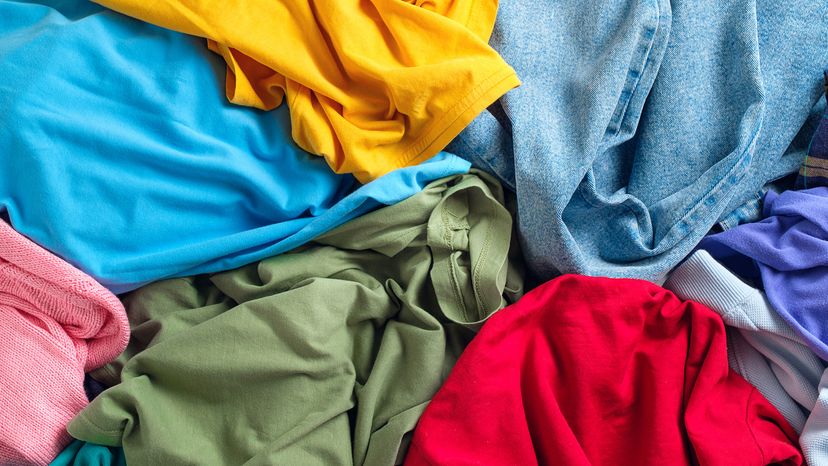Vinegar is a great ally in the fight against laundry stains. Here are a few examples:
- Coffee and tea: For coffee stains or tea stains that have set, soak the item in a solution of 1/3 cup (78 mL) of vinegar to 2/3 cup (156 mL) of water, then hang the garment out in the sun to dry.
- Grass: Removal of severe grass stains on white clothes can be helped along by soaking them in full-strength vinegar for a half-hour before washing.
- Gum: If sticky spots remain after removing a piece of gum from clothing, soak gum stains in vinegar for 10 to 15 minutes. Launder as usual.
- Ink: An older ink stain in cotton fabric may be helped by spraying with hair spray. Dab with vinegar to remove the sticky spray.
- Juice: Dried red berry juice may be removed from bleach-safe garments by soaking it in a solution of one part vinegar to two parts water. Then wash as usual.
- Mildew: A mixture of salt, vinegar and water should remove mildew stains on most fabrics. Use up to full-strength vinegar if mildew is extensive.
- Pretreatment: For synthetic blends or old stains on natural materials, presoak the stain in ammonia before applying vinegar and water.
A basic mixture of half water and half vinegar as a laundry pretreatment can do the trick with many common stains on clothing. Keep a spray bottle of this in your laundry room. Spray mixture on the stains before washing to give an extra boost.
As you've seen, vinegar can be of great help when it's time to do laundry. You're probably wonder why it's taken you this long to add vinegar to your laundry routine; it's certainly better than buying new clothes.
A Vinegar-Based Rust-Removal and Stain-Removal Paste
Make a thin paste of vinegar and salt, then spread the paste on rust stains in fabric. Lay the item out in the sun to bleach, or apply paste, stretch fabric over a large kettle, and pour boiling water through the stained area.
In both cases, allow the item to dry, then check the stain. Run the item through the rinse cycle in the washing machine, then check the stain again. Repeat treatment if any stain remains.
Vinegar Stain Pretreatment Solution
Keep this pretreatment solution on hand in the laundry room to use on virtually all tough clothing stains. Just combine:
- 1/2 cup (118 mL) vinegar
- 1/2 cup (118 mL) ammonia
- 1/2 cup (60 g) baking soda
- 2 squirts liquid soap
- 2 quarts (1.9 L) water
Keep the solution in a clearly labeled spray bottle.
